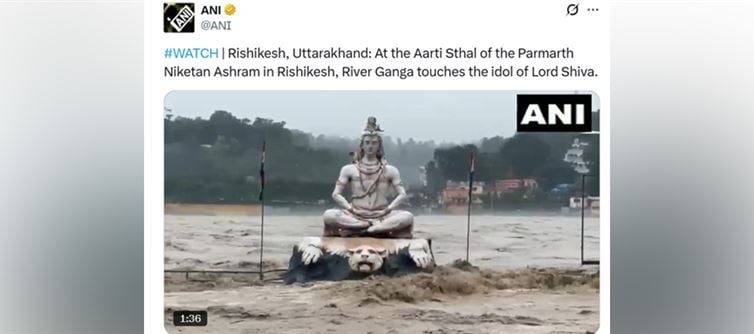
This statement references a video shared by ANI, showing the ganga River rising to touch a shiva idol in Rishikesh, Uttarakhand, during heavy rains. The tweet suggests a transformation in narrative, where what was once seen as a straightforward natural disaster is now imbued with spiritual significance, reflecting a perceived shift in how events are interpreted under different political regimes.
The reference to the ANI video, which captures the Ganga's waters reaching the shiva idol, serves as a focal point for Dr. Jain21's critique. The original post by ANI describes the event neutrally as the river touching the idol, but the tweet implies that such framing is part of a broader pattern since 2014. This pattern, according to the tweet, involves ascribing divine or mystical meanings to natural phenomena, potentially to align with cultural or religious sentiments favored by the ruling dispensation. The mention of "Maa Ganga" (Mother Ganga) and the idol of Lord shiva evokes a sacred imagery that contrasts sharply with the more secular, disaster-focused language used prior to 2014, as suggested by the tweet.
The backlash to this narrative shift is evident in the responses to Dr. Jain21's tweet, with users like Ujjwal Kumar and arjun Sinha engaging in sarcastic commentary. The discussion highlights a growing public skepticism towards what some view as an attempt to reframe natural disasters through a lens that prioritizes cultural symbolism over practical response and mitigation strategies, prompting a reevaluation of how such events are communicated and perceived in the public sphere.




 click and follow Indiaherald WhatsApp channel
click and follow Indiaherald WhatsApp channel